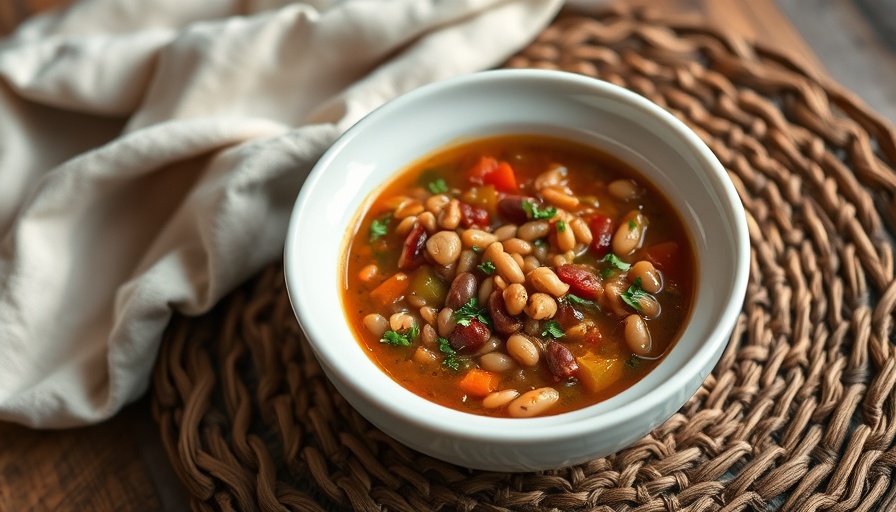
Discover Makhlouta: A Blend of Comfort and Nutrition
In the heart of Lebanese cuisine lies a hearty and wholesome soup known as makhlouta. Translating to “mix” in Arabic, this soul-warming dish is a delightful combination of beans and grains, simmered slowly to create a rich, comforting meal. It is especially beloved in mountain regions of Lebanon, where the colder climate calls for a dish that nourishes both the body and spirit.
The Perfect Comfort Food for Chilly Days
Many consider makhlouta to be a hybrid between a soup and a stew, or what culinary enthusiasts might refer to as a “stoup.” Regardless of its classification, there is no denying that each bowl is a blanket of warmth on a chilly day. The beauty of makhlouta lies in its adaptability; you can easily adjust the ingredients based on your pantry staples. Popular choices include chickpeas, great northern beans, and brown lentils. This versatility makes it not just a delicious option but also a practical one.
Flavor Profiles that Warm the Soul
What really brings the dish together is the foundational flavor provided by caramelized onions, which release a rich sweetness into the broth. A splash of pomegranate molasses adds tanginess, balancing the deep flavors beautifully. With a hint of warm spices thrown in, every spoonful of makhlouta is designed to evoke comfort and contentment.
A Family Tradition with Modern Twists
Traditionally, families enjoy eating makhlouta with pickles, like sauerkraut, accentuating the dish's flavors. Others may prefer pairing it with toasted pita chips for an added crunch. It’s a meal that invites creative experimentation; feel free to swap out grains or beans to suit your taste and dietary preferences. Additionally, if you’re seeking gluten-free alternatives, simply replace bulgur with more rice.
Health Benefits Packed in a Bowl
Besides its comforting nature, makhlouta brims with nutrition. The variety of beans provides plant-based protein, essential fiber, and a host of vitamins and minerals. Eating a diversity of legumes and grains is one of the hallmarks of a wholesome diet, supporting overall health and vitality. Not to mention, makhlouta is excellent for meal prepping; leftovers can be stored in the fridge for up to five days or frozen for three months, and many find it to taste even better on the following day!
Gather Around the Table
Sharing meals brings people together, and makhlouta is no exception. Whether you're cooking for family or friends, this dish encourages connection through its rich flavors. It reminds us of the importance of nourishing ourselves, not just physically, but emotionally and socially as well.
For those eager to dive into the world of Lebanese cuisine, making makhlouta could be your inviting entrance. A dish steeped in history, warmth, and versatility, it indeed reflects the values of Lebanese culture. Embrace the opportunity to create this comforting soup, and let its diverse flavors lift your spirits and satisfy your senses.
 Add Row
Add Row  Add
Add 




Write A Comment